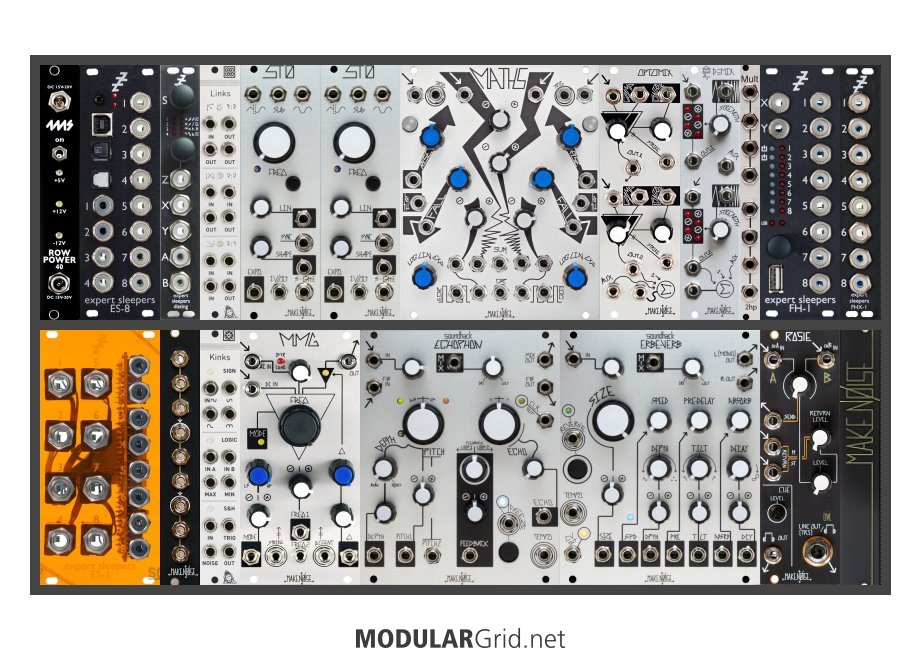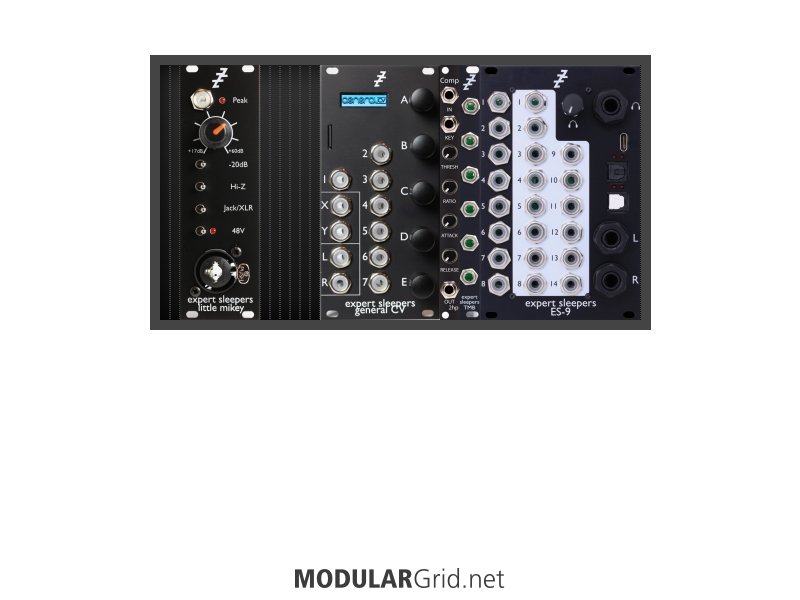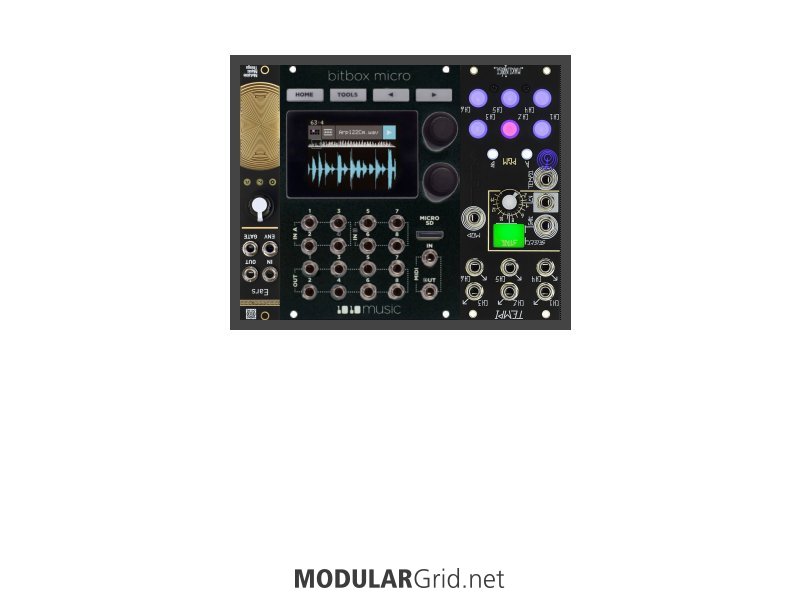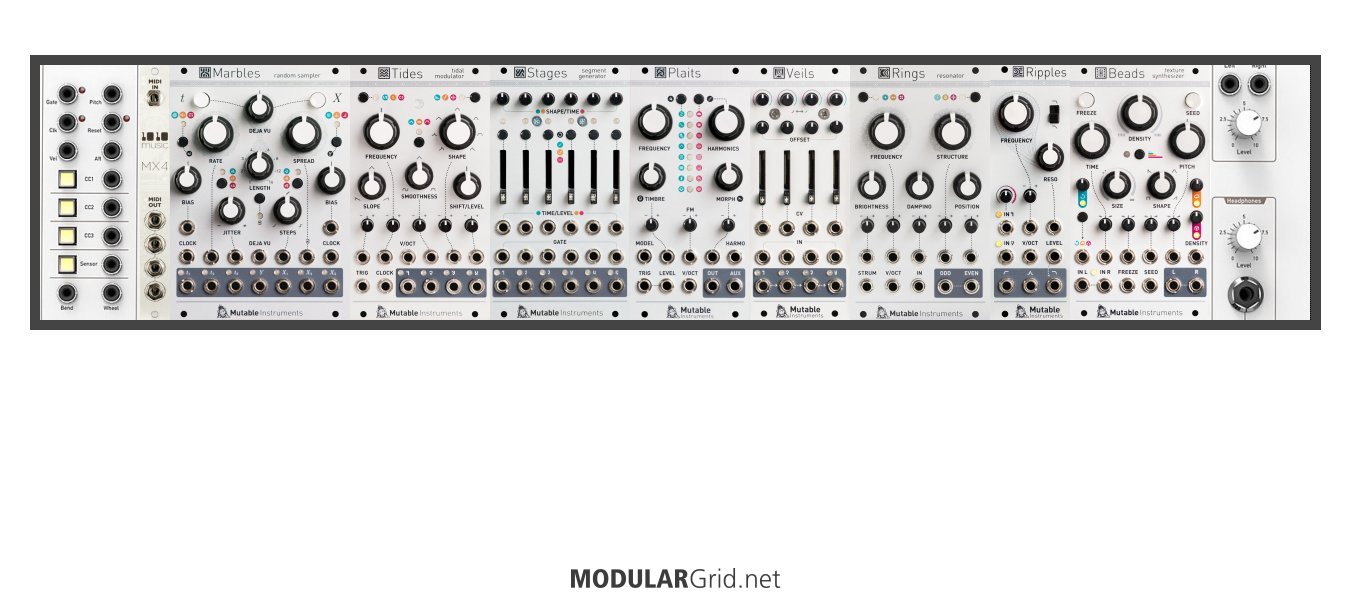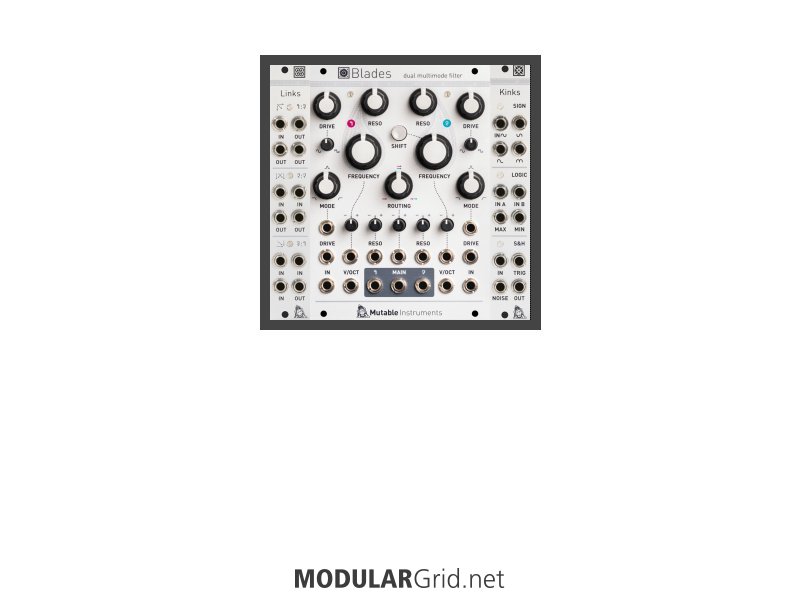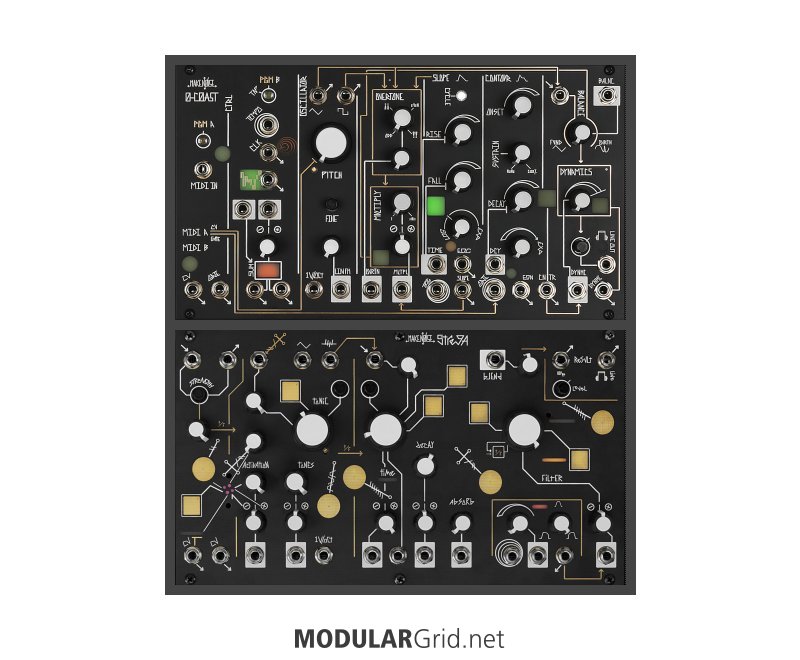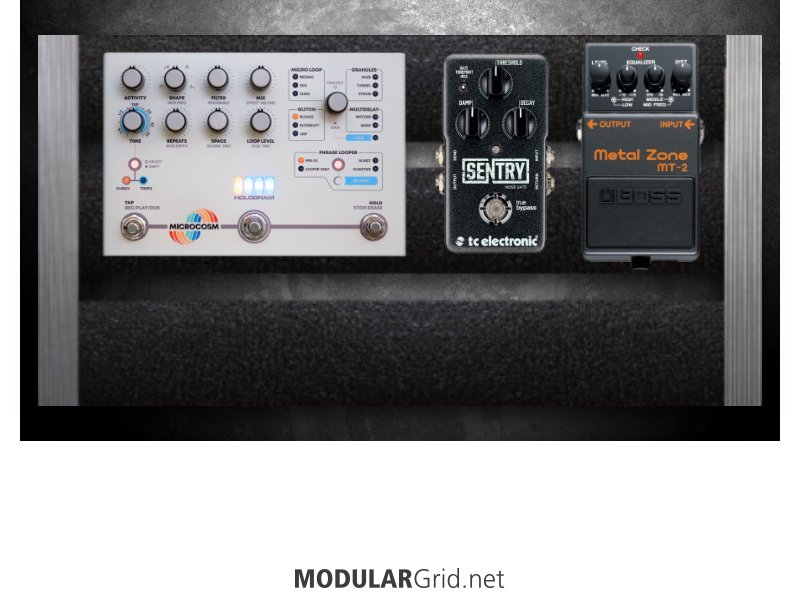I think my hangup is still in how the gate functions with Scales. Probably because I dont have Scales, lol.
I think you have it mostly right, except maybe something about the relationship between the quantizer input and the trigger. The wide-open gate (EOR) is not the signal being quantized by Scales, the S&H of the Wogglebug is. Here is a visual:
[Wogglebug S&H]---[Maths ch.2]--->[Scales Pitch Input]----- [quantizes S&H]--->[Pitch Out to v/oct of Rings & Plaits]
[Maths EOR gate]-------->[Scales Trigger Input]---[selects duration of S&H]-------- ^
The Wogglebug S&H is the signal being quantized to the key of G. The trigger input slects the moments that Scales will draw from the now quantized S&H. This is helpful if you want to control the pitch quantization with an LFO or any non-clocked source and then ensure that the pitch changes are in sync with the beat of the track. For our purposes, it also allows us to take something like a gate to determine the timing and duration of the rapid S&H changes modulated by the Wogglebug. If you put any S&H into your quantizer it should quantize the signal at the speed of the input, be it an LFO or a S&H, or whatever. But the tempo of the pitch input is over-ridden by the trigger input, allowing you to be more selective of what pitches are selected and when they are output.
As to your final point, yes, I do attenuate the range of Wogglebug's S&H pitch by running it through channel 2 of Maths and then from the channel 2 out, into Scales' 'Pitch' in.
I have tried this with other basic quantizers that have independent quantization inputs and trigger inputs. In the case of Quantermain, I would say take a S&H, attenuate the range via Maths, input it into the Sample CV #1 input on the Quantermain. Then take the EOR gate from the Maths and run it into the Sample Clock #1 input. This should achieve the effect we are looking for.
Hope this helps!
-- FredFoxtrott
My confusion arises because there is definitely a difference in how Quantermain operates in comparison to Scales. After thoroughly RTFM to brush up, I tested it and verified (via Scope, not audio).
There are 2 modes in Quantermain, clocked and continuous.
In clocked mode it requires a rising edge to trigger each new note. Whether a gate, trigger, clock, square wave lfo, whatever, it only spits out a newly quantized pitch on the rising edge of an incoming signal. So even if I were to send it a gate that stays high a minute long, I'd get exactly 1 quantized pitch until the next rising edge, not a stream of quantized pitches for as long as the gate is high. This mode is clearly not what we're looking for (even if there are ways to do it still by using the EOR gate to gate the triggers from Wogglebug Burst output - EOR gate is high, the Burst triggers from Wogglebug go through to Quantermain).
In continuous mode, it will spit out newly quantized pitch values as new values are input without regard to trigger or gate. Some value comes in, and a quantized value goes out in real time. This gets us going in the right direction. If I were to put a gate into the trigger input in this mode, the output would be transposed up or down by 1 octave (depending on the particular setting chosen) for however long the gate is high, and not turn the output of the quantization on and off like it does in your patch.
So to work around this, I need to use an extra VCA. The first VCA is to tame the raw S&H voltage, as per your patch, and the second is to gate the quantized output using the Maths EOR gate.
As a note, these sorts of patching issues are why I love modular. I really dig the puzzle; having to find the right algorithm to get a job done. That there are generally multiple ways to do one thing makes it even more exciting.
Thanks for all your help.


